Everything about nodes and internodes in cannabis plants.
In a cannabis plant, nodes and internodes are important structural parts of the stem. Nodes and internodes are crucial for the growth, structure and yield of a cannabis plant because they directly influence the development of branches, leaves and flowers. Here are the main reasons why they are so important:
What are nodes and internodes?
- Nodes are the points on the stem where branches, leaves and flowers grow from. These are, as it were, the junctions of the plant, where new shoots and branches emerge. More nodes ensure that the plant grows fuller and bushier. This can be beneficial because a bushy plant often produces more buds.
- Internodes are the parts of the stem between two nodes. The length of the internodes determines how compact or elongated a plant grows. Short internodes mean that the nodes are close together, resulting in a sturdy, compact plant. Long internodes make the plant grow taller, but often also more vulnerable to falling over or breaking.
The distance between the internodes determines how compact or stretched out a plant grows. This is important for techniques such as Low Stress Training (LST) and ScrOG, in which growers try to get the plant to grow horizontally for better light distribution and yield.
-
- Chapter 1: Growth and Structure of the Plant
- Chapter 2: Flower Formation and Yield
- Chapter 3: How do you recognise the sex of the Cannabis plant by the Nodes?
- Chapter 4: Control over Growth and Training Techniques
- Chapter 5: Influence of Genetics and Environment
- Chapter 6: How many nodes should a cannabis plant have before you can put it into flowering?
- Chapter 7: The difference between a cannabis plant grown from seed or from cuttings
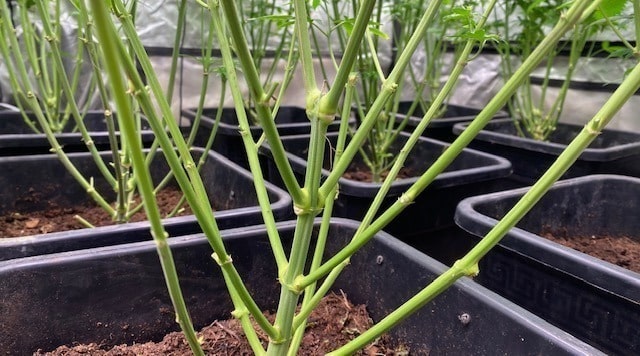
Chapter 1: Nodes and Internodes – Growth and Structure of the Plant
When growing a cannabis plant, it is important to understand how the plant grows and develops. The structure of the plant is largely determined by the nodes and internodes. These components not only influence the shape of the plant, but also how healthy and productive it will be. In this chapter, we will take a closer look at what nodes and internodes are exactly and why they are so important for the growth and structure of the plant.
The influence of nodes on plant growth
The number and placement of nodes determine how branched a cannabis plant will become. When a plant has many nodes close together, it will grow more bushy with more branches. This can be advantageous because the plant then has more space to develop buds.
Some cultivation methods, such as Low Stress Training (LST), deliberately encourage the plant to develop more side branches. This is done by carefully bending and securing the branches so that the light is better distributed throughout the plant. Because flowers form at the nodes, a well-branched plant can produce a higher yield.
The influence of internodes on the plant structure
The length of the internodes is influenced by genetics and environmental factors. Sativa-dominant plants naturally have longer internodes, causing them to grow taller and slimmer. Indica-dominant plants, on the other hand, have shorter internodes, resulting in a more compact and wider plant.
Environmental factors also play a role. When a plant does not get enough light, it will try to stretch in order to get closer to the light source. This leads to long internodes and a weaker stem. A good light source therefore helps to keep the internodes short and to grow a sturdy plant.
Temperature and humidity also influence the internodes. If the temperature is too high or there are large fluctuations in temperature, the plant can develop longer internodes. That is why it is important to create a stable environment with the right temperature and humidity levels.
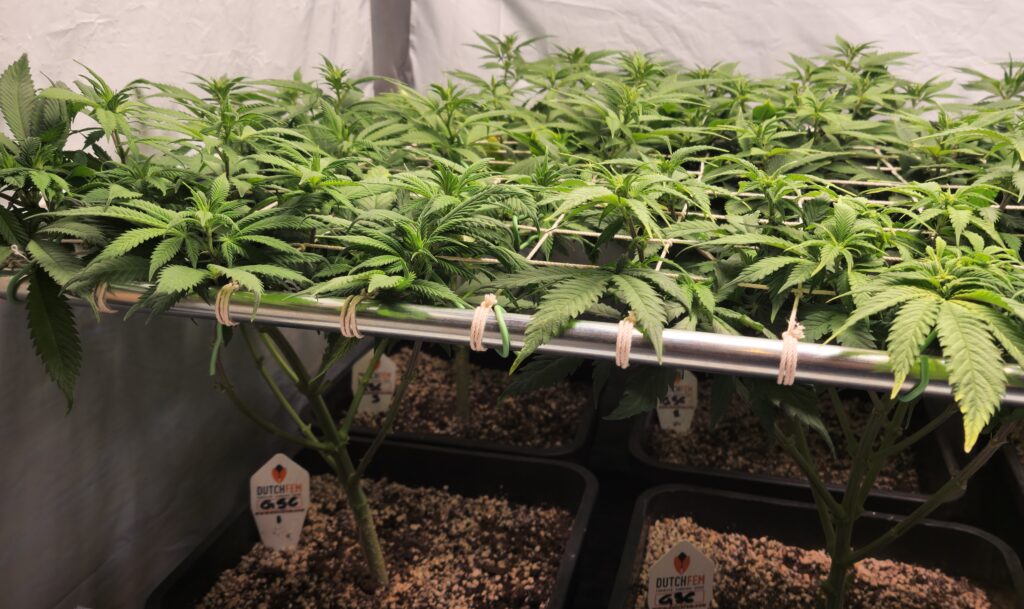
How do nodes and internodes influence the yield of the plant?
Because flowers form at the nodes, the number of nodes indirectly determines how many buds a plant can produce. By applying training techniques, such as topping, a grower can force the plant to develop multiple branches. This means more nodes and therefore a greater chance of flowers.
In techniques such as Screen of Green (ScrOG), the branches are guided through a horizontal net so that all nodes receive light evenly. This allows all buds to develop equally well, which can increase the yield.
If the internodes are too long, the light may not penetrate properly to the lower parts of the plant. This can result in smaller buds at the bottom and less efficient plant growth. Therefore, controlling the internode length is an important aspect of growing.
Summary of chapter 1
Nodes and internodes play a crucial role in the growth and structure of a cannabis plant. Nodes determine where new shoots and flowers develop, while internodes influence the height and compactness of the plant. By properly understanding and controlling these factors, growers can optimise the plant structure and achieve maximum yield.
Adjusting the internode length and stimulating extra nodes can be achieved through techniques such as LST, topping and ScrOG. Light, temperature and genetics also play a major role in how a plant develops. With the right knowledge and techniques, every grower can grow their plant to be strong, healthy and productive.
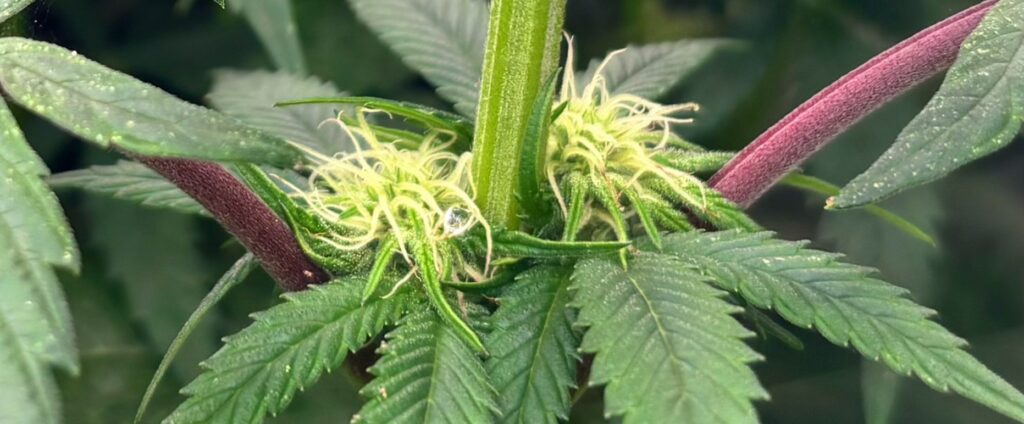
Chapter 2: Nodes and Internodes – Flower formation and yield
Flower formation is the most important process in cannabis cultivation because the flowers (also known as buds or colas) contain the active ingredients that make the plant so valuable. These flowers develop at the nodes, making these the most important places for yield. The structure of the plant, including the number of nodes and the length of the internodes, has a direct influence on the eventual yield.
The role of nodes in flower formation
Each node is a potential point where flowers can develop. The more nodes a plant has, the more potential flowers it can produce. This means that plants with many branches and a high node density often yield a larger harvest.
Training techniques such as topping and ScrOG deliberately increase the number of nodes to maximise flower production. By topping the main stem, you force the plant to develop new branches, which leads to extra nodes and thus more flowers.
The influence of internodes on yield
The length of the internodes determines how close the flowers grow together. Short internodes ensure that the flowers are packed tightly together, which often results in compact, full buds. Long internodes can cause the flowers to be further apart, which means that the plant needs more space and may grow less efficiently.
Factors such as light intensity, temperature and nutrition can influence internode length. By keeping the plant in optimal conditions and applying techniques such as LST, growers can control the internodes and promote even flower distribution.
Optimising yield
To achieve the maximum harvest, it is essential to understand and manipulate both the nodes and the internodes. This can be done by:
- Training techniques such as topping, LST and ScrOG to improve the distribution of the flowers.
- Good lighting, so that all nodes are optimally utilised.
- Controlling internode length through the right temperature, humidity and nutrients.
By managing these factors well, growers can develop a healthy plant with lots of flowers, leading to a higher yield and better quality buds.
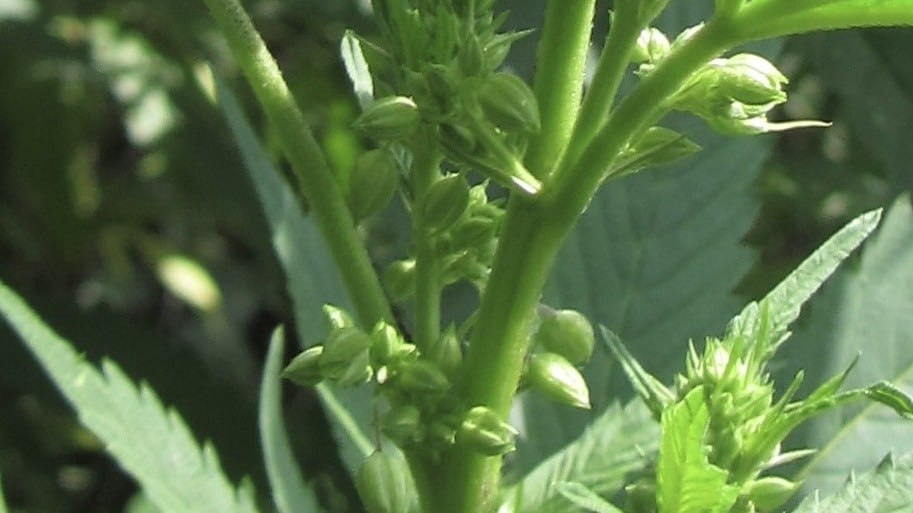
Chapter 3: Nodes and Internodes – Determining Gender
The sex of a cannabis plant is determined by the pre-inflorescence buds that form at the nodes. This is a crucial moment for growers who want to cultivate only female plants, because male plants do not produce flowers and are best removed as quickly as possible.
How do you recognise the sex of a cannabis plant by the nodes?
The first signs of gender begin to appear at the nodes, usually after four to six weeks of growth.
- Female plants develop small hairs (stigmas) that emerge from a bulb.
- Male plants form small sacs that contain pollen.
By recognising the sexes in time, growers can remove male plants before they pollinate female plants, which ensures higher quality cannabis and a higher yield. Female plants that are pollinated with male pollen stop producing flowers/buds and from that moment on focus solely on producing seeds. The result is that the tops of your female plants are full of seeds, something that every grower naturally wants to avoid. If you have ever smoked a seed in a joint, you know exactly why this is so bad, and why weed tops with seeds in them are worthless.
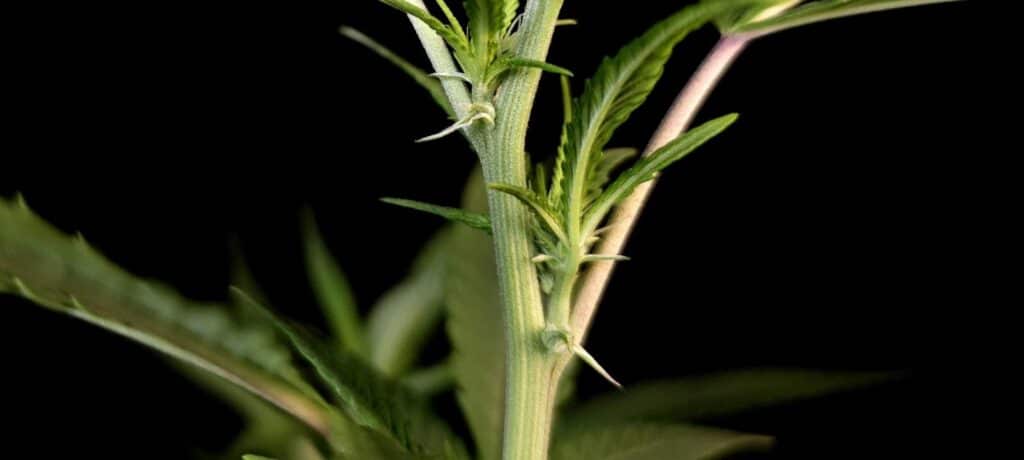
Chapter 4: Control of Growth and Training Techniques
When growing cannabis, various training techniques can be applied to control growth and optimise yield. Nodes and internodes play a crucial role in this. Three commonly used techniques are:
- Low Stress Training (LST): By bending and securing branches at the nodes, the plant can grow wider and send more light to the side branches. read more in this LST blog
- High Stress Training (HST): By applying techniques such as topping or supercropping at the nodes, the plant can be stimulated to develop multiple main branches. read more about HST in this blog about Topping Cannabis
- Screen of Green (ScrOG): Branches with many nodes are guided through a net to optimise space utilisation. read everything about Scrog in this blog
These techniques help growers improve the shape, structure and yield of their plants. (Click on the orange links to read more about LST, HST and Scrog.)
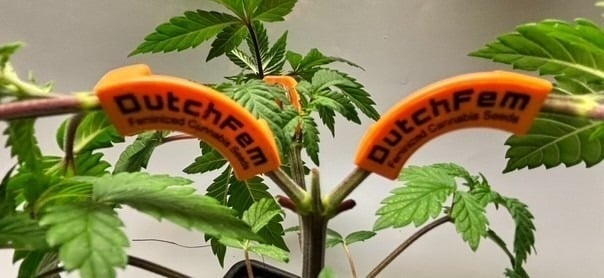
Chapter 5: Influence of Genetics and Environment
The growth and structure of a cannabis plant are not only influenced by breeding techniques, but also by genetic characteristics and environmental factors. The length of the internodes and the way in which nodes develop depend strongly on the genetic background of the plant and the conditions in which it grows.
Genetic Influence on Nodes and Internodes
Sativa-dominant plants naturally have longer internodes. This is because these plants originally come from tropical areas, where they develop tall and slender to optimise light capture. The long internodes allow them to grow taller, but they often need more space and a longer flowering time.
Indica-dominant plants, on the other hand, have shorter internodes, causing them to grow compactly and bushy. This is an adaptation to their original environment in mountainous regions with colder temperatures. This structure makes indicas more resistant to harsh weather conditions and they are often ready for harvest more quickly.
Hybrid plants combine characteristics of both strains and can have a mix of internode lengths and branching patterns. Depending on the genetic composition, a hybrid plant can grow more densely like an indica or grow taller like a sativa.
Environmental factors that influence nodes and internodes
In addition to genetics, environmental factors play a major role in the development of nodes and internodes. One of the most important influences is light intensity. When a plant does not receive enough light, it will stretch to get closer to the light source, which leads to longer internodes. This phenomenon, known as stretching, can result in a weak, thin plant.
Temperature also influences the length of the internodes. Too high temperatures can cause the plant to grow faster with longer internodes. Growers who want a compact plant must ensure that the temperature does not rise too high.
Stress factors such as irregular watering, temperature fluctuations and poor air circulation can also influence internode length. A stable and healthy environment helps the plant to develop strong internodes and healthy nodes.
Chapter 6: How many nodes should a cannabis plant have before you can put them into flower?
The number of nodes (branches) a cannabis plant should have before flowering depends on several factors, such as the size of your grow space, the type of cannabis seeds you use and how much time you have for growing. Here are some things to keep in mind:
If you use autoflowering cannabis seeds, the plant will start to flower automatically, usually 4 to 5 weeks after the seed has germinated. This type of plant does not need a special light cycle to flower. This makes it ideal for growers who want less control over the flowering process.
With photoperiod feminised cannabis seeds, you have more control over when the plant starts to flower. With these seeds, you have to adjust the light cycle to start flowering. If you use the SCROG (Screen of Green) method, the number of nodes is less important. Experienced SCROG growers wait until their screen is about 75% filled with branches, and then switch to a 12/12 light cycle to trigger flowering.
If you grow indoors with photoperiod feminised seeds, many growers start flowering after about 5-6 weeks. This is the period in which the plant is in the vegetative phase. At that point, the plant usually has between 5 and 12 nodes, although the exact amount can vary depending on the type of seed and the growing conditions. The height of the plant will also depend on the strain and the environment in which it grows.
If you grow outdoors, the number of nodes can vary greatly depending on factors such as the climate, latitude and the strain of cannabis. Outdoor plants begin to flower when the days get shorter, which often happens around August in the northern hemisphere and February in the southern hemisphere.
In short, the number of nodes a cannabis plant needs to flower depends on the strain of seeds, the cultivation method and the environment in which the plant grows.
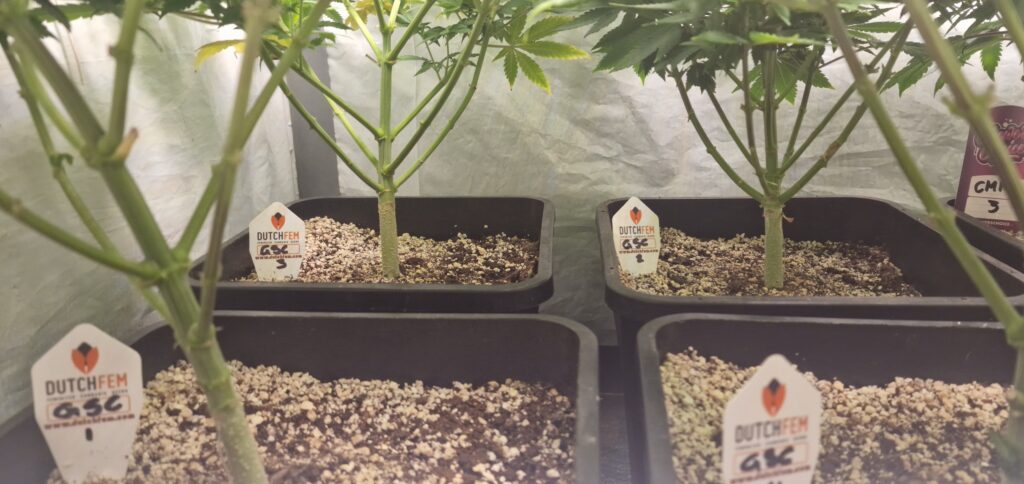
Chapter 7: The difference between a cannabis plant grown from seed or from cuttings
If you have a cannabis plant and you are wondering whether it was grown from seed or from a cutting, you can recognise this from the nodes (the branches or offshoots of the plant). The way in which the branches develop and attach to the main stem can be an important indication of the plant’s origin. Let’s see how you can recognise this.
Difference between a cannabis plant grown from seed and a plant grown from cuttings
When a cannabis plant is grown from seed, it has symmetrical growth in the initial phase. This means that the two side branches that grow from the node are equally divided on both sides of the main stem. This symmetry ensures that the plant branches evenly and has a balanced structure. This allows the plant to develop more branches, which leads to a higher yield. The plant has more space to create side branches, which in turn can bear new flowers. This is especially important if you are aiming for a higher yield from your cannabis plant.
In a plant grown from a cutting, the branching pattern is different. Instead of two symmetrical branches growing from the node, only one branch grows. This means that the plant exhibits asymmetrical growth. The branches are often less well distributed and may develop in a more irregular pattern. The reason for this is that the cutting is a section of an adult plant, and the branches that grow from the cutting take on the genetic characteristics of the mother plant. This often results in faster growth, but with fewer branches and a less balanced plant structure.
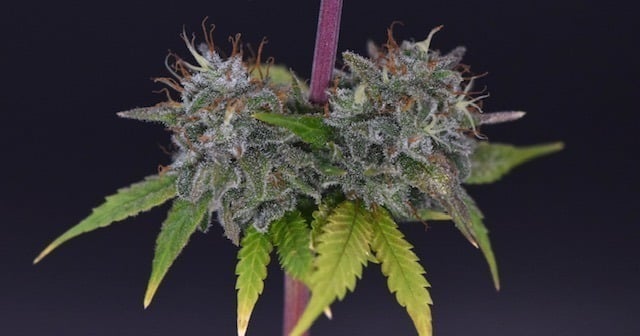
Why does a plant grown from seed have a higher yield?
The difference in the branching of the nodes has a direct influence on the yield of the plant. A plant that grows from seed has many more branches and ramifications. Because there are more side branches, the plant can produce more flowers. Each branch can bear flowers, and the more branches, the more flowers there are, which means that the plant will ultimately yield a larger harvest.
A cutting, on the other hand, has fewer branches due to its asymmetrical growth. This means that fewer flowers will develop per plant, which limits the yield. The speed of growth can also influence the yield. Cuttings grow faster than plants grown from seed, but because they develop fewer branches, they are ultimately not as productive as a plant grown from seed.
Summary Chapter 7:
So how can you tell if a cannabis plant has been grown from seed or from a cutting? Look at the nodes: in a plant grown from seed, the side branches are symmetrically distributed, while in a plant grown from a cutting, only one side branch (asymmetrically) emerges from the main stem at each node. This symmetry in plants grown from seed ensures that they branch better, which leads to a higher yield. Cuttings may grow faster, but due to the asymmetrical branching, they yield less. So it is important to keep an eye on this difference if you are aiming for the highest yield from your cannabis plants.
All about nodes and internodes in cannabis plants Conclusion:
Both genetics and environmental factors determine how a cannabis plant grows and branches. By choosing the right genetics and creating an optimal growing climate, growers can gain control over the length of the internodes and the distribution of the nodes. This helps keep the plant healthy and productive, which ultimately leads to a better yield. Because a cannabis plant grown from seed has twice as many nodes as a plant grown from cuttings, it goes without saying that these plants also yield considerably more.

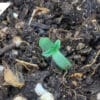


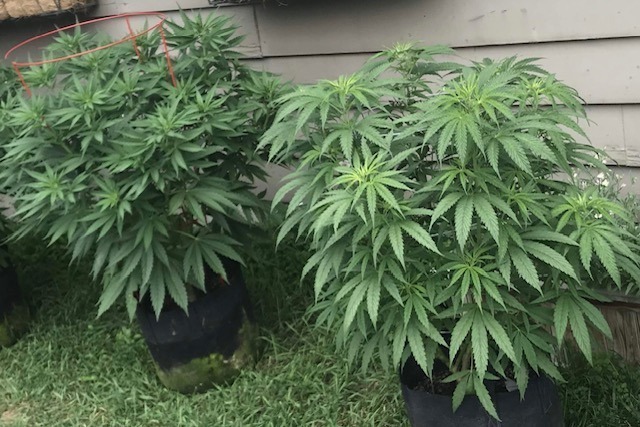
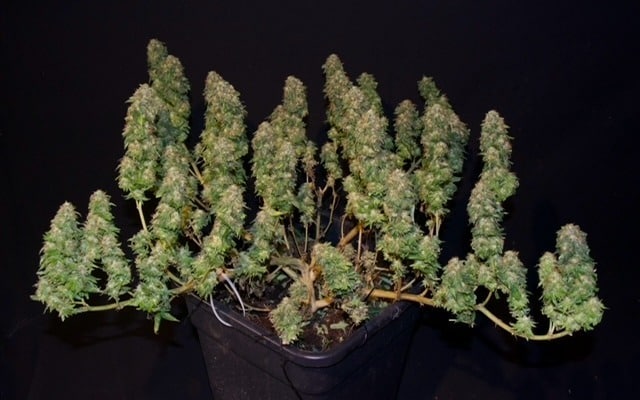
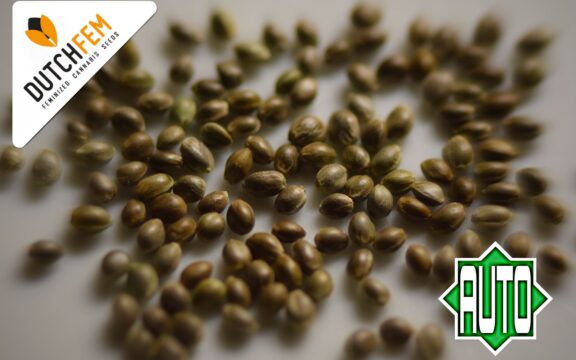
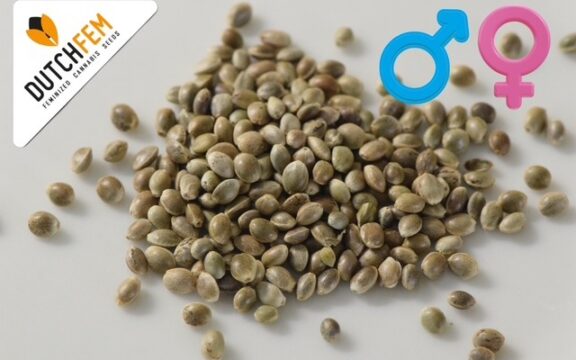
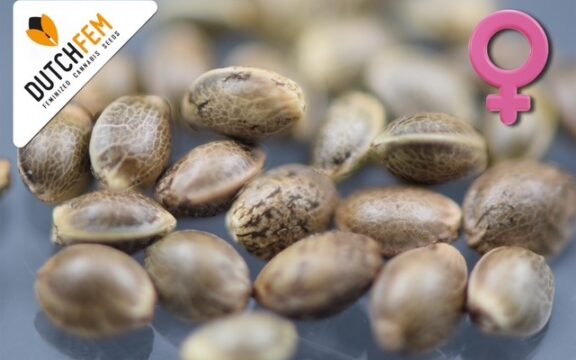


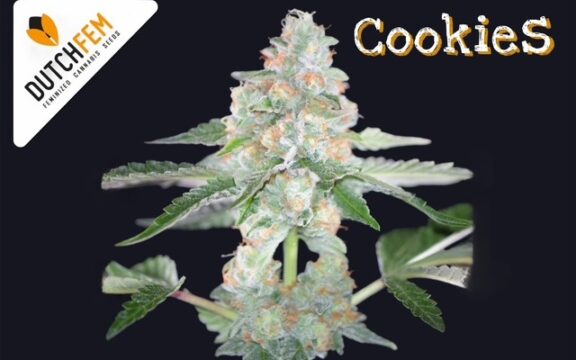




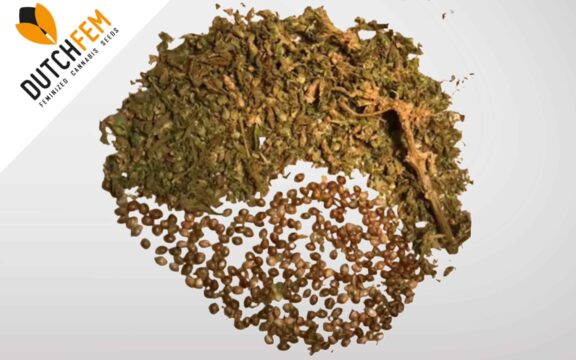



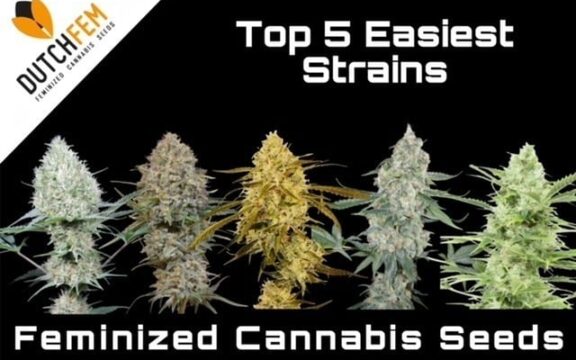

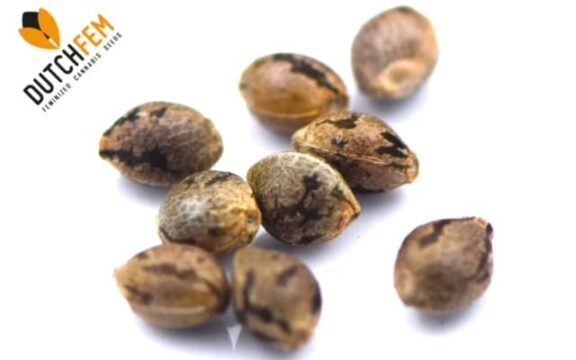


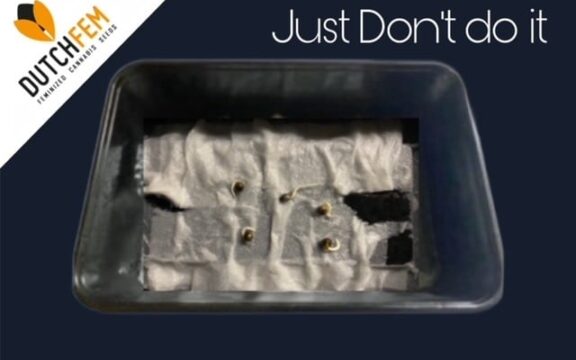
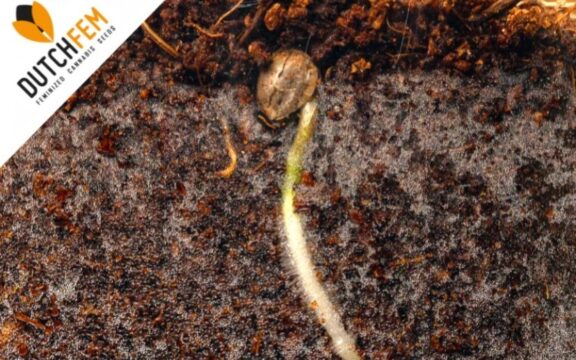







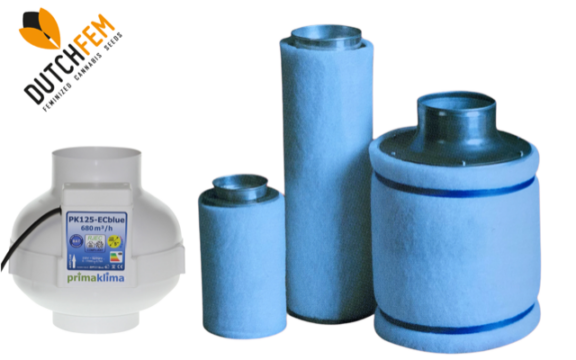






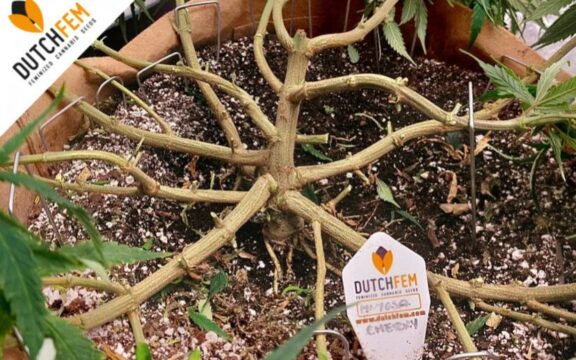




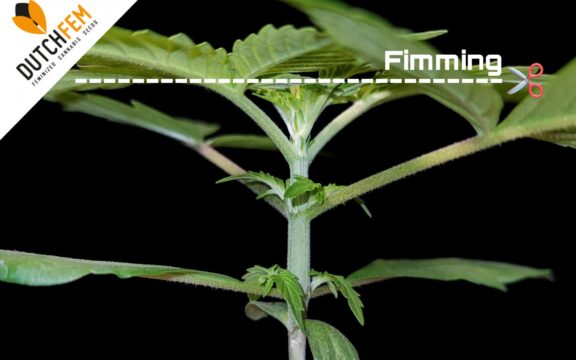




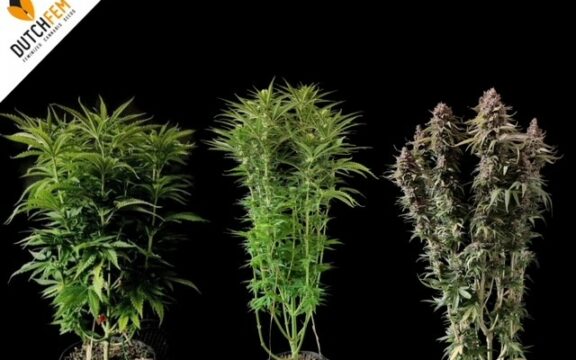





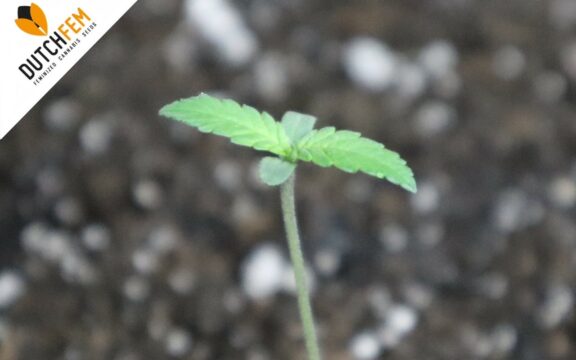

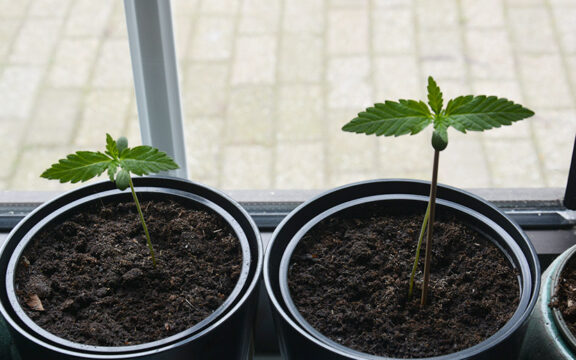
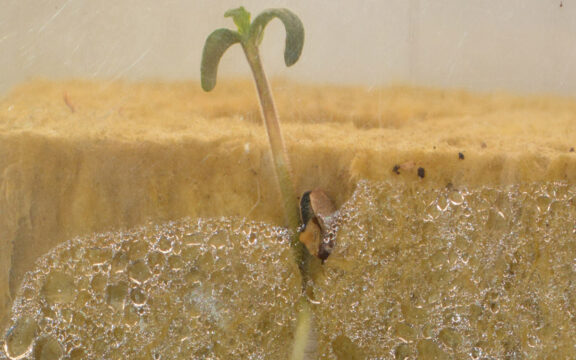




You must be logged in to post a comment.